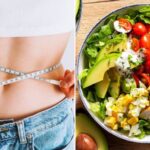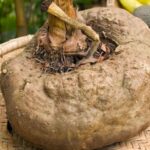The Atkins Diet is one of the most well-known and popular weight-loss programs today. But what is it exactly, and how does it work? Let’s dive in and explore the ins and outs of this fascinating diet.
1 What is the Atkins Diet?
 What is the Atkins Diet?
What is the Atkins Diet?
The Atkins Diet is a weight-loss program that is based on a unique approach to nutrition. It is similar to other low-carb diets but with some key differences. The Atkins Diet allows for very low carbohydrate intake while still being comfortable and adaptable, especially for those in Asia and Vietnam. It is designed as a long-term, low-carb diet to help with weight loss and weight maintenance.
The diet emphasizes consuming high-protein, high-fat foods while limiting or excluding high-carb foods like sugar and white flour. This approach aims to reduce the body’s intake of sugars, thereby burning excess fat and helping to achieve and maintain a healthy weight.
2 How Does the Atkins Diet Work?
 Atkins Pyramid
Atkins Pyramid
To understand the Atkins Diet better, it’s helpful to visualize the Atkins Food Guide Pyramid. At the top of the pyramid are grains like barley and wheat, which should be consumed sparingly, only after you’ve achieved your weight loss goals. The diet focuses on high-protein foods, healthy fats, and vegetables.
Notably, the pyramid excludes “white” foods like sugar, white flour, and white rice, indicating that these should be avoided.
3 The Four Phases of the Atkins Diet
Phase 1: Introduction – Carb Restriction
 Phase 1: Introduction – Carb Restriction
Phase 1: Introduction – Carb Restriction
The first phase of the Atkins Diet is the most challenging. During this initial stage, your body needs to adjust to a new way of eating, relying on fat for energy and accelerating the burning of excess fat. This is when you’ll see the most significant weight loss.
Phase 1 should last for at least two weeks, during which you’ll need to avoid foods like bread, starchy vegetables, fruits, milk, and most dairy products (except for butter and heavy cream). Your daily carbohydrate intake will be restricted to just 20g.
Phase 2: Ongoing Weight Loss – Slightly Increase Carb Intake
 Phase 2: Ongoing Weight Loss – Slightly Increase Carb Intake
Phase 2: Ongoing Weight Loss – Slightly Increase Carb Intake
In Phase 2, you’ll continue until you’re about 4.5 kg away from your weight goal. Here, you’ll reintroduce carbohydrates into your diet to maintain your weight loss progress. You’ll add some vegetables, berries, and nuts to your meals, increasing your daily carb intake to 25-45g.
Phase 3: Pre-Maintenance
 Phase 3: Pre-Maintenance
Phase 3: Pre-Maintenance
This phase offers a bit more flexibility. You can add an extra 10g of carbohydrates to your diet each week, incorporating low-starch vegetables and whole grains. As you approach your weight goal, you’ll gradually add more starch to your meals, causing weight loss to slow down. Phase 3 begins when you’re close to your desired weight and lasts for about a month before moving on to Phase 4.
Phase 4: Lifetime Maintenance
 Phase 4: Lifetime Maintenance
Phase 4: Lifetime Maintenance
The final phase is a lifelong commitment to maintaining your ideal weight. You’ll need to keep your daily carb intake between 45-100g and avoid refined carbohydrates. This phase is about finding a balance that works for you and your body.
4 What to Eat and What to Avoid on the Atkins Diet
 What to Eat and What to Avoid on the Atkins Diet?
What to Eat and What to Avoid on the Atkins Diet?
To ensure the best results on the Atkins Diet, it’s important to pay attention to the types of foods you consume. Here’s a list of foods to include in your diet:
- Butter
- (Chicken, Turkey)
- High-fat Dairy
- Eggs
- Low-starch Vegetables (e.g., Kale, Broccoli, Asparagus)
- Nuts and Seeds
- Healthy Fats like Avocado, Olive Oil, and Coconut Oil
- Water, Tea, and Coffee
Alongside these foods, there are also foods that you should avoid, including:
- Sugar and Sweeteners
- Grains (including Wheat and Rice)
- Low-fat and Diet Foods (often high in sugar)
- Legumes (Beans, Peas, Lentils)
A typical day on the Atkins Diet might include an omelet with vegetables for breakfast, a chicken salad with nuts for lunch, and a steak with vegetables for dinner. Snacks can include cheese, nuts, or seeds.
5 Important Considerations for the Atkins Diet
 Important Considerations for the Atkins Diet
Important Considerations for the Atkins Diet
The initial carb restriction in Phase 1 of the Atkins Diet may cause side effects like dizziness, headaches, fatigue, and constipation. Additionally, very low-carb diets can sometimes lead to nutritional deficiencies, especially if they lack fiber. To counter this, it’s important to include fiber-rich carbs, whole grains, and consider taking supplements.
The Atkins Diet may not be suitable for everyone. People with severe kidney disease, pregnant or breastfeeding women, and those taking diuretics or diabetes medications should consult a doctor before starting this or any other diet.
In conclusion, the Atkins Diet is a popular and effective approach to weight loss and maintenance. By following its guidelines and phases, you can achieve your desired weight and improve your overall health. Remember to always consult with a healthcare professional before starting any new diet.
Sources: HelloBacsi.com, Vinmec.com
Củ Nưa: The Exotic Delicacy Taking the City by Storm at 250,000 VND per kg.
In the hustle and bustle of modern life, city dwellers are constantly on the lookout for culinary delights that not only tantalize their taste buds but also nourish their bodies. Enter the humble Nưa root, a once-obscure vegetable that is now taking the culinary world by storm, with prices soaring to 250,000 VND per kilogram.



































